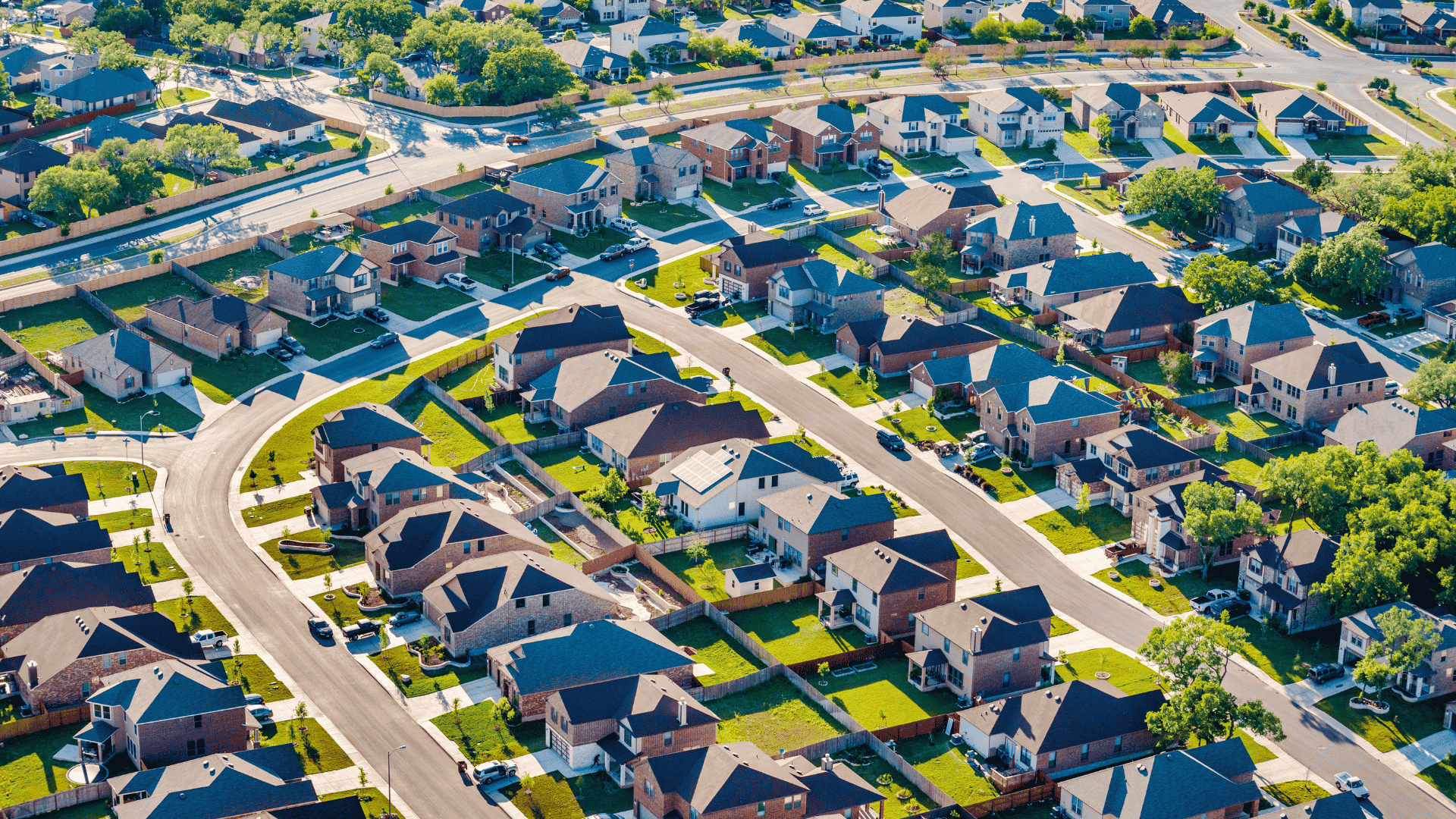Green Shoots of Recovery for U.S. Housing Market?
🏠 U.S. Housing Market 2025: Is a Recovery Finally Taking Root?
After years of sluggish sales and high borrowing costs, signs suggest the U.S. housing market may be shifting. While prices remain high and mortgage rates stubborn, increased inventory and seller activity point to a potential revival—especially for real estate investors.
Investment Properties: Browse Turnkey Rental Properties For Sale in Our Online Portal
📊 Key Housing Market Data – Mid 2025
| Metric | Value | Source |
|---|---|---|
| Existing home sales (May 2025) | +0.8% (MoM) | NAR |
| New home sales (May 2025) | -13.7% | U.S. Census Bureau |
| Avg 30-year mortgage rate | 6.77% | Freddie Mac |
| U.S. housing shortfall | 3.8 million homes | Realtor.com |
| Avg home price vs. 2020 | +50% | S&P CoreLogic Case-Shiller Index |
| Monthly house price growth (April) | +0.4% YoY (slowest since 2012) | First American |
| Sellers who cut asking prices (May) | 6.4% | Redfin |
| Median days on market | 46 days | Redfin |
| Inventory of unsold homes (April) | $698 billion | Redfin |
| Months’ supply of homes (May) | 4.4 months | NAR |
Related: U.S. Real Estate markets Forecast and Expert Predictions for the Next 5 Years
📉 What’s Behind the Housing Market Slump?
The core issue is expensive borrowing. Since mortgage rates surged above 7% in 2022—the highest in 20 years—demand has remained suppressed. Rates have eased slightly to 6.77%, but buyers are still sidelined.
Many hoped high rates would cause prices to fall. But tight supply continues to support pricing. The U.S. remains short nearly 4 million homes, a gap stemming from post-2008 construction declines. From 2008 to 2023, the U.S. built 1.23 million homes per year, 18% below the long-term average (Realtor.com).
Another factor? The lock-in effect. Homeowners with 3% mortgages are reluctant to sell, reducing resale supply further.
“There is still a nationwide housing shortage, and homeowners are not in a distressed position.”
— Lawrence Yun, Chief Economist, National Association of Realtors
Related: The Best Places to Invest in Rental Properties in 2025
🌱 Signs of a Recovery Emerging
Despite the gloom, key metrics suggest a slow recovery may be underway:
New-home construction outpaced household formations for the first time since 2016 (Realtor.com).
500,000 more sellers have listed homes over the past two years, per Redfin.
Sellers now outnumber buyers 3-to-1, pushing the unsold inventory to a record $698 billion.
“People are sick of putting their lives on hold… They may have locked in a low interest rate and hoped that mortgage rates would be lower by now, but since they aren’t, they are finally in a place that they are willing to sell.”
— Ali Wolf, Chief Economist at Zonda
Related: Investing in Cleveland Real Estate: Everything You Need to Know
🧠 What This Means for Real Estate Investors
While the market hasn’t shifted fully to buyers yet, the balance of power is changing.
👇 Early Signs of Buyer Power
Price appreciation is slowing: Home prices rose just 0.4% YoY in April—lowest since 2012.
Price cuts increasing: 6.4% of sellers slashed asking prices in May.
Homes sitting longer: Median days on market climbed to 46.
“If we return to a buyer’s market, we could see more homes with price cuts and longer days on market.”
— Ali Wolf, Zonda
Related: Real Estate Investors are Buying 27% of U.S. Homes
🔮 Forecast: When Will the Market Truly Recover?
According to Lawrence Yun (NAR), sales will grow meaningfully only when mortgage rates drop. For now, price declines will be temporary and local, especially in oversupplied markets like Austin, Jacksonville, and Tampa.
⏳ Interest Rate Forecasts
| Forecasting Group | 2025 Rate Cut Estimate | Expected Mortgage Impact |
|---|---|---|
| Goldman Sachs | -75 bps (starting Sept) | Modest drop, gradual impact |
| Morningstar | -100 bps | Mortgage rates may hit 5.75% in 2026 |
| Wells Fargo | -75 bps | Lower rates expected in 2026 |
| Citigroup | -75 bps | Initial cuts won’t move rates much |
Related: Most Real Estate Investors are Buying in The Next 12 Months
📈 Strategic Investor Takeaways
Watch Local Markets Closely
Focus on areas where supply is growing faster than demand (e.g., Austin, Tampa).Prepare for Opportunity, Not Panic
A national crash is unlikely—but selective buying during pricing dips can be powerful.Look Beyond the Mortgage Rate
Use creative financing (DSCR loans, seller financing) to acquire assets while rates are high.Expect More Inventory Ahead
More frustrated sellers will list. Be ready to negotiate on price or terms.
Related: International Investment in U.S. Real Estate: 2024 in Review
✅ Conclusion
The U.S. housing market may still look bleak on the surface—but for savvy investors, the signs of a shift are clear. More inventory, slowing price growth, and future rate cuts could create excellent entry points in late 2025 and beyond.
Rather than waiting for a perfect moment, investors should act strategically. Focus on markets showing softening demand, leverage creative financing, and prepare for rising opportunities as frustrated sellers return to the market.
The recovery may be slow, but it’s already underway.
Related: Cleveland Has Second-Lowest Median Home Price in U.S.
GROW YOUR WEALTH WITH U.S. REAL ESTATE
Start your U.S. real estate investment journey today with high-quality cashflow real estate. Book a Agende uma conversa estratégica gratuita e individua with a member of our senior management team to discuss your personalized strategy.
“Having personally invested in over 120 US rental properties from overseas, I know the true value of getting the right advice and support.
David Garner – Cashflow Rentals
GROW YOUR WEALTH WITH U.S. REAL ESTATE
Start your US real estate investment journey today, and book a Agende uma conversa estratégica gratuita e individua with a member of our senior management team.
“Having personally invested in over 120 US rental properties from overseas, I know the true value of getting the right advice and support.
David Garner – Cashflow Rentals

❓FAQs – U.S. Housing Recovery & Investment
Is the U.S. housing market in a buyer’s market?
Not yet. A true buyer’s market begins at 6+ months’ supply. We’re at 4.4 months, but buyer leverage is improving in many regions.
Why are prices still high if sales are low?
Because supply is tight. New builds have lagged for 15+ years, and most sellers are not financially distressed.
When will mortgage rates drop significantly?
Analysts expect modest cuts beginning in late 2025. Big shifts may not occur until 2026.







![USA Property Investment for Foreign Buyers [2025 Guide]](https://cashflowrentals.net/wp-content/uploads/2025/07/USA-Property-Investment-for-Foreigners-Expert-2025-Guide-500x383.png)



